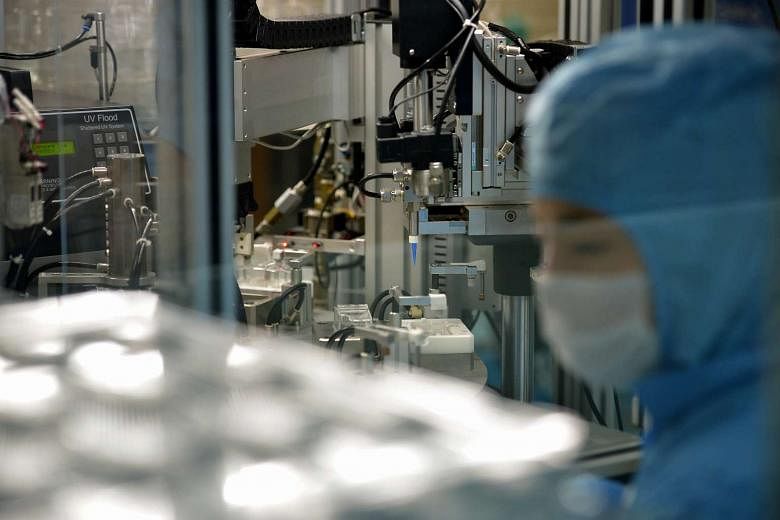SINGAPORE - Singapore's factory output surprised with its best monthly growth showing in two-and-a-half years with a strong 6.7 per cent jump in September from a year ago, figures from the Singapore Economic Development Board showed on Wednesday (Oct 26).
The performance defied the median forecast by economists polled by Bloomberg for a rise of 1 per cent given the trend of sluggish exports and depressed demand for offshore drilling rigs.
Of note though, output in September 2015 provided a rather weak base for the year on year comparison. Still, the last time factory output increased more than in September was the 12.2 per cent jump in March 2014.
Even after excluding biomedical output, which tends to be more volatile, production grew 3.5 per cent.
On a seasonally adjusted month on month basis, manufacturing output rose 3.3 per cent in September compared to August. Economists were tipping a decline of 1.2 per cent. Excluding biomedical manufacturing, output grew 0.9 per cent.
Biomedical manufacturing output grew 22.2 per cent in September, compared to the same month last year. The pharmaceuticals segment expanded 26.9 per cent due to higher production of active pharmaceutical ingredients and biological products, while the medical technology segment grew 9.6 per cent with higher export demand for medical instruments.
Cumulatively, output from this cluster rose 8.2 per cent in the first nine months of the year compared to the same period in 2015.
Electronics, the biggest manufacturing cluster here, enjoyed its fourth straight month of double-digit percentage growth. Its output in September rose 15.9 per cent year on year.
The semiconductors segment grew 34.8 per cent, but this was partially offset by declines in the rest of the electronic segments. On a year-to-date basis, electronics output expanded 9.8 per cent from the same period a year ago.
Transport engineering was the only cluster that saw output contract, with production down by 18.9 per cent year on year in September. The land transport and aerospace segments rose 9.1 per cent and 0.9 per cent respectively, with the aerospace segment recording higher engine repair jobs from commercial airlines.
However, this was offset by decline in the marine & offshore engineering segment (31.5 per cent) as rig building activities and demand for oilfield & gasfield equipment remained weak amidst the low oil price environment. In the first nine months of the year, output from transport engineering fell 17.9 per cent compared to the same period a year ago.


